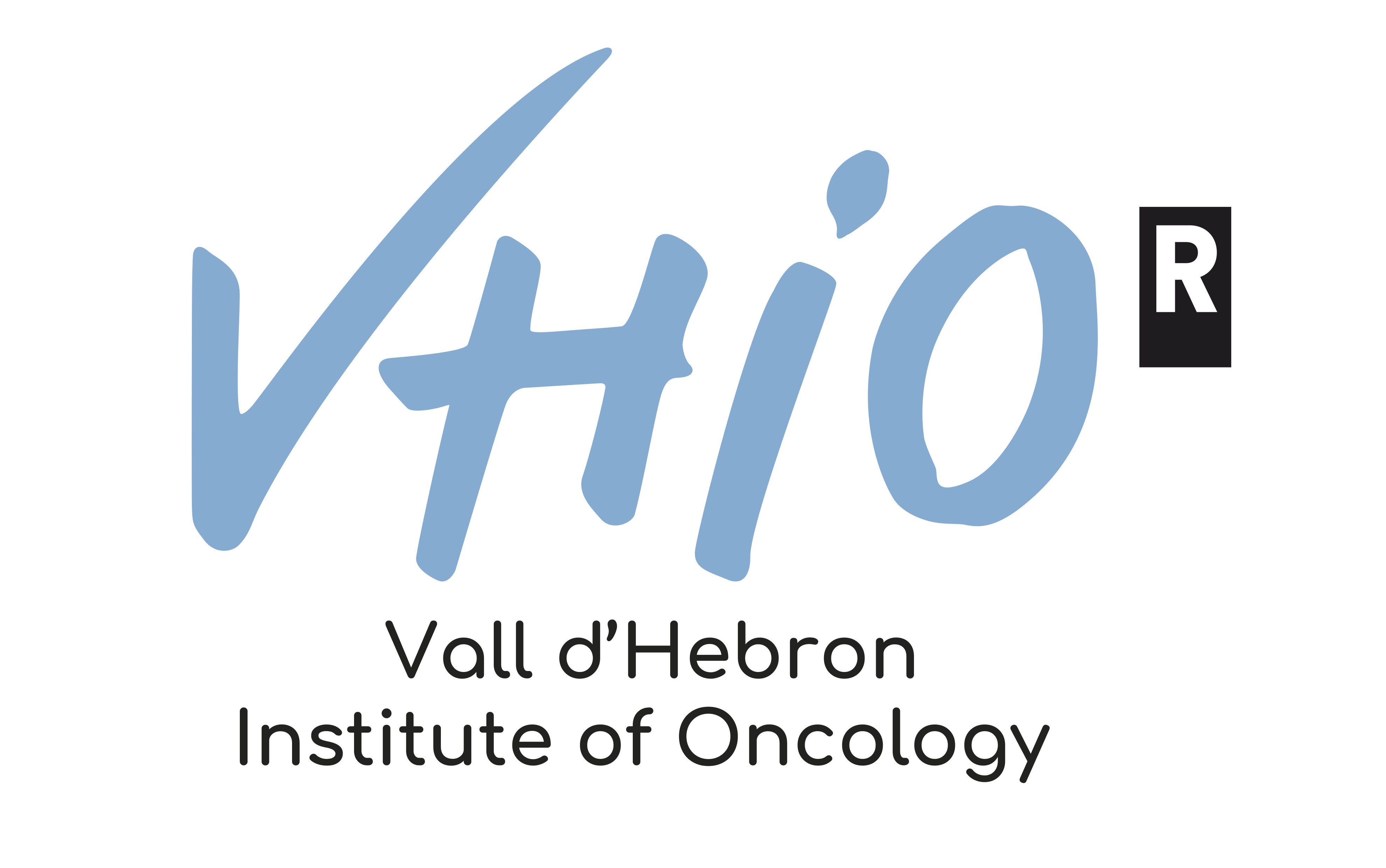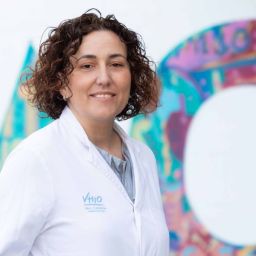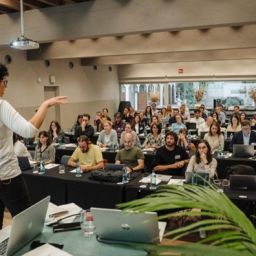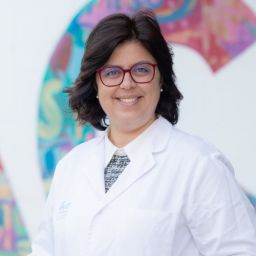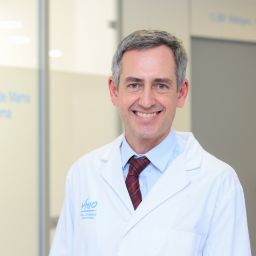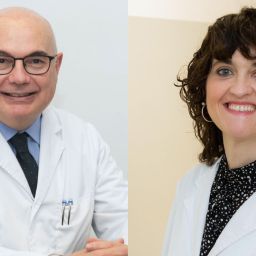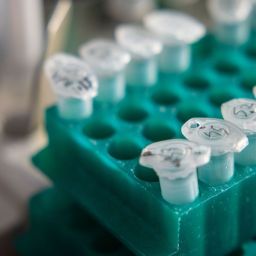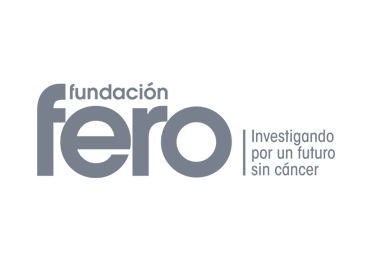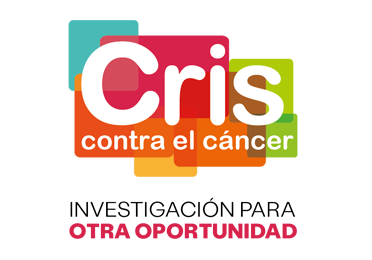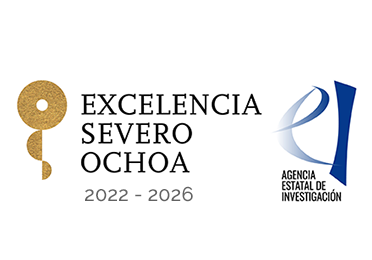
- Researchers at the Vall d’Hebron Institute of Oncology (VHIO), part of the Vall d’Hebron Campus, have found that breast milk from breast cancer patients diagnosed during pregnancy or postpartum contains circulating tumour DNA that could be used in the future to diagnose the tumour at earlier stages.
- These patients usually have a poor prognosis because the diagnosis is made when the tumour is at an advanced stage and technically more difficult to detect and also because these women are not included in the population screening programmes, due to their age.
- The results of this research, now published in the journal Cancer Discovery, came about because of the concerns of a breast cancer patient about transmitting the disease to her baby during breastfeeding and the solidarity of various sponsorship initiatives and grants supporting the research.
Researchers at VHIO, led by Dr. Cristina Saura, head of the VHIO Breast Cancer Group and the Breast Unit at Vall d’Hebron University Hospital., and Dr. Ana Vivancos, head of VHIO’s Genomics laboratory, has shown for the first time that breast milk from breast cancer patients contains tumour DNA, known as circulating tumour DNA (ctDNA). This ctDNA can be detected through liquid biopsy in breast milk and could become a new tool for early diagnosis of breast cancer in the postpartum period. The results of this research have just been published in the journal Cancer Discovery.
The Vall d’Hebron University Hospital Breast Unit has a specific multidisciplinary unit to treat women diagnosed with breast cancer during pregnancy or during the postpartum period. “During all the years that this unit has been operating,” explains Dr. Saura, “we have observed that breast cancer patients who are diagnosed during pregnancy or, especially, during the postpartum period, have a worse prognosis because they are diagnosed at more advanced stages of the disease.” This is why new and effective early detection methods are needed to detect these tumours.
“The physiological changes that occur in the breast during pregnancy and postpartum make tumours more difficult to detect; we have also observed that biologically, postpartum tumours are more aggressive, and women become pregnant at ages when population screening with mammography is not yet carried out. In Spain, for example, these check-ups do not start until they reach the age of 50.
A project that began because of a patient’s concerns
Biomedical research, unlike other fields of science, relies on the participation, experience, and involvement of patients either because of their generosity in taking part in clinical trials or because they ask scientists questions from a completely different perspective.
In this case it was the concerns of a breast cancer patient diagnosed while pregnant with her third daughter. She was concerned that she had passed the tumour through her breast milk to her second daughter during breastfeeding, which had been long and had lasted until shortly before her breast cancer diagnosis.
“The patient” explains Dr. Saura “brought us a sample of breast milk that she had stored in her freezer. So, thanks to her, that’s where our project started, because although we know that breast cancer is not transmitted through breast milk, we decided to analyse the sample in search of markers that could help us in our research. And indeed, when we analysed the patient’s breast milk, we found DNA with the same mutation that was present in her tumour. The breast milk had been frozen more than a year before the patient’s cancer diagnosis”.
Liquid biopsy in breast cancer
Liquid blood biopsy is currently used in patients with metastatic breast cancer for the detection or monitoring of certain mutations, but it still has low sensitivity as a tool for early diagnosis or predicting relapse as it requires a very high amount of circulating tumour DNA in the blood to be detected.
In recent years, liquid biopsy has been developed to screen urine for bladder cancer or saliva for head and neck cancer. “So we thought that, because of its proximity to the tumour, breast milk could be an alternative source for detecting the tumour by liquid biopsy” says Dr. Ana Vivancos.
The article now published in the journal Cancer Discovery outlines the first results of the study. The researchers collected breast milk and blood samples from breast cancer patients diagnosed during pregnancy or postpartum, as well as from healthy women who were breastfeeding.
 “We analysed the breast milk and blood samples using two techniques, Next Generation Sequencing (NGS) and Droplet Digital PCR (ddPCR),” explains Dr. Ana Vivancos. “And we found that there was free circulating DNA of tumour origin in the breast milk. We were able to detect mutations which were present in the tumours of patients with breast cancer in the samples of breast milk of 13 of the 15 patients analysed. Whereas, in the blood samples collected at the same time, ctDNA was only detected in one of them”.
“We analysed the breast milk and blood samples using two techniques, Next Generation Sequencing (NGS) and Droplet Digital PCR (ddPCR),” explains Dr. Ana Vivancos. “And we found that there was free circulating DNA of tumour origin in the breast milk. We were able to detect mutations which were present in the tumours of patients with breast cancer in the samples of breast milk of 13 of the 15 patients analysed. Whereas, in the blood samples collected at the same time, ctDNA was only detected in one of them”.
“The breast milk samples of the two patients in whom the mutation was not detected had been collected within the first hours of lactation and were colostrum”, explains Dr. Miriam Sansó, lead author and postdoctoral researcher in the Cancer Genomics laboratory during the study, “so we deduced that probably not enough time had passed for the tumour DNA to have been released into the milk. So we have since decided to take breast milk samples at least two weeks after initiating breastfeeding.
“We havee shown for the first time that breast milk obtained from breast cancer patients contains sufficient ctDNA to be detected by liquid biopsy and that this ctDNA can be detected even before breast cancer can be diagnosed using conventional imaging”, states Dr. Cristina Saura.
“Our nxt step in making this discovery practically useful was to design an NGS-based genomic panel as a possible method of early diagnosis in breast cancer”, says Dr. Vivancos. Based on publicly available data, the researchers designed the VHIO-YWBC gene panel to detect the most frequent mutations present in women with breast cancer diagnosed before the age of 45. The panel has “a sensitivity of more than 70%. This means that, of the samples from our patients tested with this panel, 7 out of 10 cases would have been detected with a specificity of 100%”.
“This panel could be used in the future as a method for the early diagnosis of breast cancer in the postpartum period”, explains Dr. Saura. “In the same way that a heel prick is performed on all newborns, collecting a breast milk sample from all women after birth for breast cancer screening could also be considered”.
One of thtudy. “We analysed the blood and breast milk samples that we had collected in the follow-up at eight and eleven months postpartum and found thae cases of high-risk women included in the study further reinforces this idea of using the designed gene panel and liquid breast milk biopsy to advance the early diagnosis of breast cancer. This was a healthy woman who wanted to participate in the study when she became pregnant with her first child at the age of 46. 18 months after giving birth to her son, she was diagnosed with breast cancer as a result of breast ultrasound scans as part of the follow-up st the mutation in the patient’s tumour was already present in the breast milk of the affected breast at eleven months postpartum, 6 months before the breast ultrasound diagnosis. We did not detect the mutation in the blood or the milk samples from the healthy breast and therefore could have diagnosed the tumour six months earlier with the use of this technique”, concludes Dr. Carolina Ortiz, researcher in the breast cancer group at VHIO and lead uthor of the article, together with Dr. Saura.
The next step in confirming the usefulness of using breast milk as a new liquid biopsy tool for the early detection of breast cancer in the postpartum period is to perform this non-invasive test on thousands of women. Based on the results published today, we are initiating a study to collect breast milk samples from 5,000 healthy women worldwide who became pregnant at 40 years of age or older, or at any age who carry mutations that increase their risk of breast cancer (BRCA1, BRCA2, PALB2, RAD51C/D).
“Our results open the door to the future use of breast milk as a new source of liquid biopsy for the early detection of breast cancer in the postpartum period using a non-invasive technique” affirms Dr. Cristina Saura. “Before this technique can be put into practice, these results need to be confirmed in a larger number of patients, but the results published to date are encouraging and offer a potential new tool for the early diagnosis of breast cancer in a particularly sensitive population of young women and mothers. The best way to continue to increase the survival and cure of breast cancer patients is to detect it as early as possible and this is a new strategy that could greatly help us in this regard”.
“This research was possible thanks to the involvement of breast cancer patients and the various sponsorship initiatives that have supported the project, such as the El Paseíco de la Mama, which allowed us to start this study from scratch”, explains Dr. Saura. “Thanks to them we have been able to generate the preliminary data for the study and then submit the project to competitive calls for grants. We currently have more than €300,000 raised through competitive grants from the FERO Foundation, “la Caixa” Foundation, SEOM, AECC (with the support of Loterías y Apuestas del Esatdo), ISDIN, and FIS (of the Carlos III Health Institute) to continue this research”.
This research work is also supported by the CERCA Programme of the Generalitat de Catalunya and the Severo Ochoa Programme funded by the Agencia Estatal de Investigación.
Reference
Saura, C. Ortiz, J. Matito, EJ. Arenas, A. Suñol, O. Córdoba, A. Martínez-Sabadell, I. García-Ruiz, I. Miranda, C. Morales-Comas, E. Carrasco, C. Viaplana, V. Peg, P. Nuciforo, N. Bayó-Puxan, JM. Miquel, M. Gómez-Rey, G. Villacampa, S. Arévalo, M. Espinosa-Bravo, J. Balmaña, R. Dienstmann, J. Arribas, J. Tabernero, A. Vivancos, M. Sanso. Early stage breast cancer detection in breast milk. Cancer Discovery, Ept 2023. https://aacrjournals.org/cancerdiscovery/article/doi/10.1158/2159-8290.CD-22-1340
